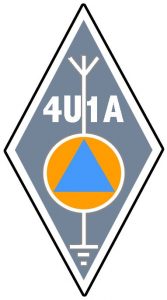 Prepare yourself for emergencies.
Prepare yourself for emergencies.
The best thing you can do for emergency preparedness is make sure that you and your family are ready. In an emergency, take care of your home and family first. Only then should you think about ham radio. If you’re not ready at home, you can’t provide assistance to others.
What do Amateur Radio operators do during and after disasters?
Amateur Radio operators set up and operate organized communication networks locally for governmental and emergency officials, as well as non-commercial communication for private citizens affected by the disaster. Amateur Radio operators are most likely to be active after disasters that damage regular lines of communications due to power outages and destruction of telephone, cellular and other infrastructure-dependent systems.
How do Amateur Radio operators help local officials?
Many radio amateurs are active as communications volunteers with local public safety organizations. In addition, in some disasters, radio frequencies are not coordinated among relief officials and Amateur Radio operators step in to coordinate communication when radio towers and other elements in the communications infrastructure are damaged.
What are the major Amateur Radio emergency organizations?
Amateur Radio operators have informal and formal groups to coordinate communication during emergencies. At the local level, hams may participate in local emergency organizations, or organize local “traffic nets” using VHF (very high frequencies) and UHF (ultra high frequencies). At the state level, hams are often involved with state emergency management operations. In addition, hams operate at the national level through the Radio Amateur Civil Emergency Service (RACES/USA), which is coordinated through the Federal Emergency Management Agency, and through the Amateur Radio Emergency Service (ARES/USA), which is coordinated through the American Radio Relay League and its field volunteers. Many hams are also involved in Skywarn, operating under the National Weather Service and provide emergency weather information to the NWS for analysis and dissemination to the public.
Is Amateur Radio recognized as a resource by national relief organizations?
Many national organizations have formal agreements with the Amateur Radio Emergency Service
(ARES/USA) and other Amateur Radio groups including:
- Department of Homeland Security — Citizen Corps (USA)
- Federal Emergency Management Agency (USA)
- National Communications System (USA)
- Salvation Army (USA)
- National Weather Service (USA)
- Association of Public Safety Communications Officials (USA)
(Source: ARRL.org)
Reference materials: IARU Emergency Telecommunications Guide
The latest version of the IARU Emergency Telecommunications Guide is available for download in the following languages:
External Links:
AMATEUR RADIO EMERGENCY NETWORK AUSTRIA (ARENA):
QTH: Vienna city (Austria). ARENA MAP

- Emergency Station Co-ordinator: OE1XUU.
- UHF Emergency Channel: 438.950 MHZ. (CTSS-162.2 Hz).
- VHF : 145.500 MHz.
- PMR446 ch: 446.09375 MHz.
In German language:
- Landesnetz Wien:
Informations- und Ressourcennetz – Phonie:
Relais Kahlenberg OE1XUU, Ausgabe 438,950 MHz, CTCSS 162,2 Hz (Bei
Ausfall von OE1XUU: Einsatz eines Notfunkrelais mit derselben QRG)
Nachrichtennetz – Datenfunk:
Winlink (Die Notfunkstellen arbeiten primär auf VHF/UHF via Winlink
Packet), Bei Ausfall der Hamnet-Verbindungen zwischen den Packet-Knoten
Betrieb auf Packet p2p – VHF, 1k2
Nachrichtennetz – Phonie: DMR -UHF
Notruffrequenz – Phonie: 145,500 MHz
- Subnetze K-Vorsorgestandorte:
Von der Stadt Wien werden sukzessive sogenannte
K(atastrophen)-Vorsorgestandorte als Anlaufstelle für die Bevölkerung
eingerichtet, die durch FunkamateurInnen besetzt werden. Die
K-Vorsorgestandorte übernehmen gleichzeitig die Funktion einer NCS für
ihren örtlichen Bereich und überwachen zusätzlich zu den QRGs des
Landesnetzes nachfolgende QRGs:
Notruffrequenz – Phonie: PMR446 – Kanal 8 (446,09375 MHz)
Taktisches Netz für lokale Einsätze – Phonie: DMR-UHF

 Prepare yourself for emergencies.
Prepare yourself for emergencies.